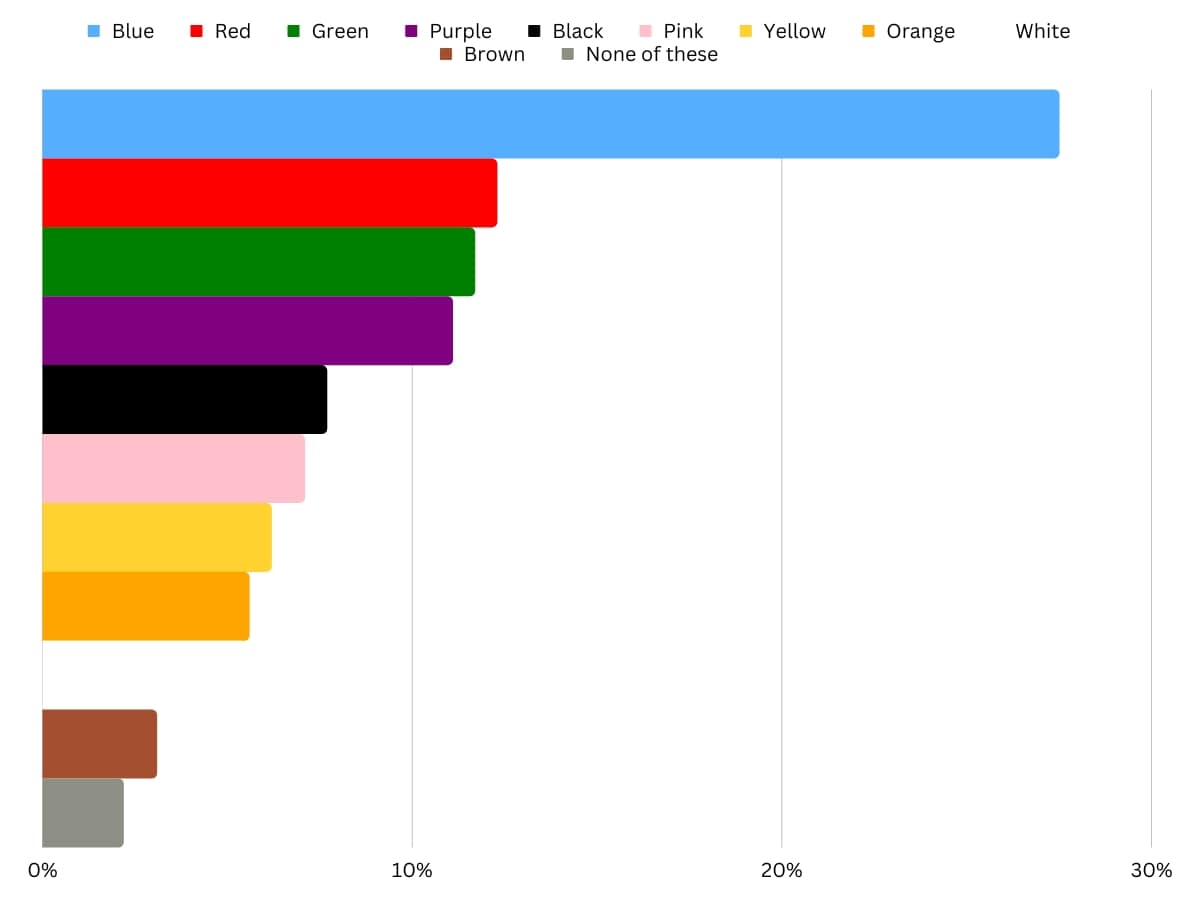Have you ever asked yourself what’s the most favorite color in the world? One color that consistently ranks as a favorite worldwide is blue. It’s tranquil and calming.
But why do some colors appeal to us more than others? What factors contribute to this preference?
In today’s article, we will discuss the most favored color in the world, why it is so popular, and what psychological factors contribute to this choice.
The World’s Most Popular Color
A worldwide survey found that blue is the most popular color in 10 countries on four continents. This is followed by green, purple, and red.
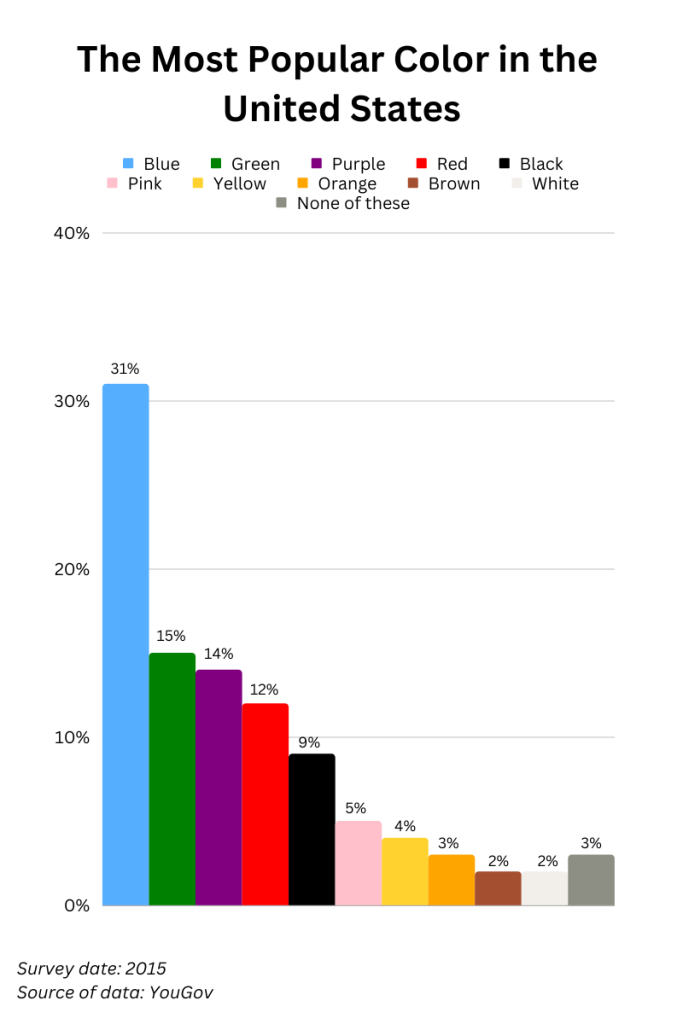
Our attraction to blue may be rooted in nature. The vast expanse of the sky and the serene waters of the ocean both boast various shades of blue, creating a sense of tranquility.
In addition, The Independent published a study in 2017 that shows deep teal (a blue-green) is the world’s most popular color. The survey involved 30,000 people in 100 countries.
Responses vary from year to year. Moreover, these choices are influenced by culture, varying from country to country.
Color preferences vary according to life experiences and social background, even within the same culture. In Western culture, blue is traditionally associated with boys, while pink is considered the color of girls.
This trend emerged with the United States demographic policy of the 1940s, known as the Baby Boom. Interestingly, before this period, pink was the color of boys, while blue was the color of girls.
The Most Popular Colors In Different Countries
According to a YouGov survey conducted in ten countries across four continents, blue is the most popular color in the world. These nations include the United States, the United Kingdom, Australia, China, Hong Kong, Malaysia, Singapore, Thailand, and Indonesia.
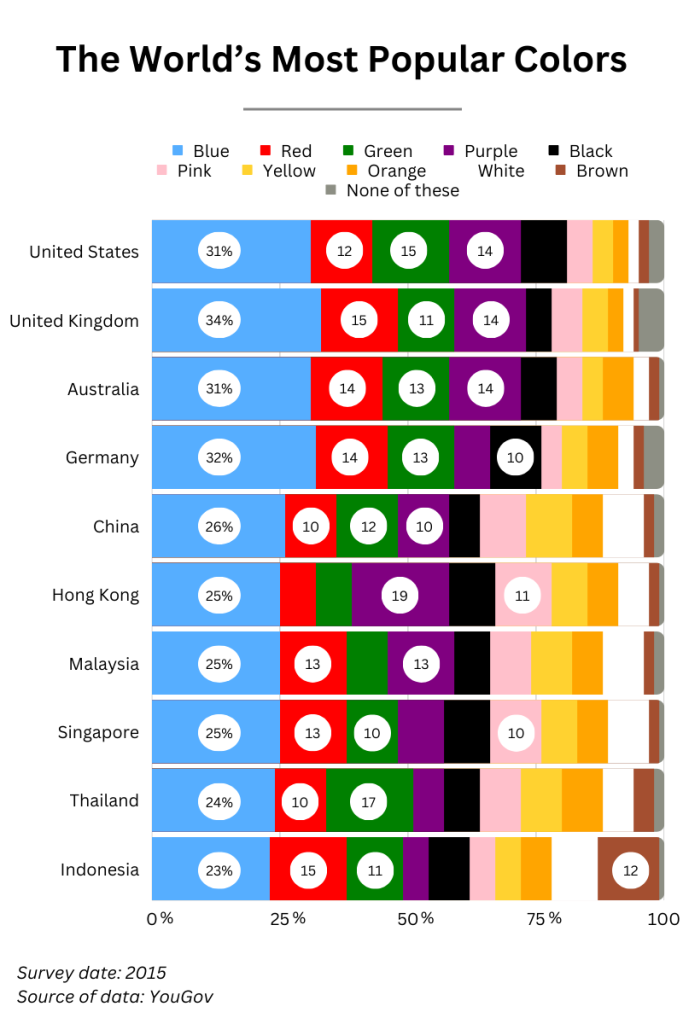
The same survey revealed that:
- In the United States, blue (31%) and green (15%) are the most popular hues. Both are cool and soothing and take us back to nature. They are followed by purple (14%), red (12%), black (9%) and pink (5%).
- In the United Kingdom, blue (33%) is followed by red (15%) and purple (14%) – a mixture of blue and red. Green ranks 4th with 11%, followed by pink (6%), black (5%) and yellow (5%).
- In Germany, blue ranks first with 32%, followed by red (14%), green (13%) and black (10%). Purple (7%) and yellow (6%) rank 5th and 6th.
- In the UK, Australia, and Malaysia, red and purple share the second place.
According to another study conducted by Spoonflower using data from approximately 200,000 purchases, blue, black, and gray are the most favored colors for home decor purchases in the United States, with blue leading the way in 41 states.
Shutterstock has mapped the pixel colors of downloaded images to identify the trendiest shades. Here are the trendiest colors by country:
United Kingdom – Pink
Hex: #FFC0CB
United States – Misty Rose
Hex: #FFE4E1
Canada – Misty Rose
Hex: #FFE4E1
Australia – Linen
Hex: #FAF0E6
France – Linen
Hex: #FAF0E6
Germany – Aquamarine
Hex: #66CDAA
Switzerland – Steel Blue
Hex: #4682B4
Spain – Sandy Brown
Hex: #F4A460
Russia – Indian Yellow
Hex: #F4AF60
Japan – Wheat
Hex: #F5DEB3
- The most popular include Calming Coral, Velvet Violet, Pacific Pink, Emerald Green, Jade Green, Lime, Mint, and Teal.
- Pacific Pink and Calming Coral were among the most downloaded colors in 2022.
- Pink in various shades is the most downloaded color in images in the United Kingdom, the United States, Canada, Mexico, the Netherlands, Italy, and Brazil.
- In Germany, aquamarine is the most trendy color (#66CDAA).
Calming Coral
Hex #E9967A
Pacific Pink
Hex: #DB7093
Velvet Violet
Hex: #800080
A study conducted by Spoonflower also revealed strong regional differences in color preferences in the US.
- California and its neighboring states buy black decor most, the South prefers gray, and the remaining 41 states favor blue.
- Of 74 US cities, blue ranks top in more than half, including New York, Washington DC, Miami, Houston, Dallas, and San Francisco.
- Los Angeles and Sacramento are among the cities with black ranking first, while Chicago and Boston buy gray the most.
Why is Blue the World’s Favorite Color?
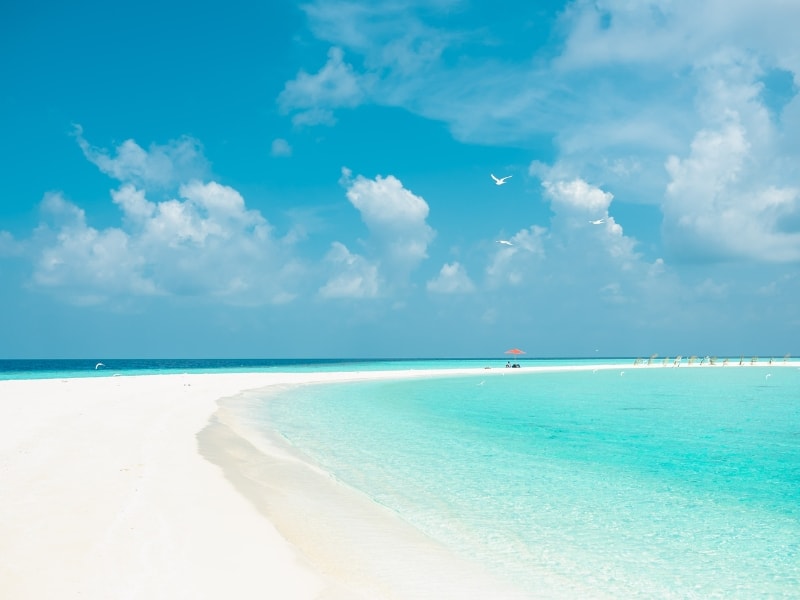
Blue is the world’s favorite color because it is psychologically associated with freedom, calm, and relaxation. We inevitably associate the color of the clear skies and open seas with positive and soothing things.
According to a study, this color creates feelings of calm and relaxation.
Because we associate positive things with the color blue, these associations give us feelings of security and trust.
We also associate this hue with freedom and open spaces as the sky and distant mountains appear blue. It soothes us by taking us to the sea and relaxation.
Blue is also a cool hue and gives us a cold impression, reminding us of shade. Cool colors – blue, green, and purple – are usually associated with calm and relaxation. Ironically, these are among the most preferred.
Furthermore, it is seen as a sign of trust and loyalty, so many companies use this color in their branding.
This hue makes a room appear larger yet colder and emptier in interior design. Moreover, it enhances productivity and creativity when working in the blue rooms.
So, blue is the world’s favorite color because it is associated with freedom, imagination, open spaces, and inspiration. Moreover, it has meanings of trust, loyalty, confidence, faith, intelligence, stability, and reliability.
What Psychological Factors Influence Your Color preferences?
Our color preferences are influenced by many psychological factors that shape our perceptions and emotional responses.
These factors include cultural background, personal experiences, emotional responses, gender, biological factors, personality traits, and context or situation.
Cultural Background: Different cultures attach various meanings and associations to colors. These influences shape our perceptions of colors from an early age.
Personal Experiences: Positive experiences associated with certain colors can lead to a preference for those colors.
Emotional Responses: Colors can evoke powerful emotions. Red, for example, is often associated with passion and love, while blue is linked to calm and serenity.
Gender: Studies have shown that girls significantly preferred pink, purple, and red more than boys, while boys showed a greater preference for blue and black.
Biological Factors: Men’s brains often require slightly longer wavelengths of light to experience the same colors as women. Moreover, a study by Abramov found that women tend to better discriminate among colors than men.
Personality Traits: Individuals who are extroverted and outgoing may be drawn to bright and energetic colors like orange and yellow, while introverted individuals may prefer more muted and calming colors like pastels or earth tones.
Context: In fashion, people may choose colors that align with current trends or an occasion’s formality. In interior design, colors can influence our perception of space and mood.
Color of the Year
This year, the trends are relatively the same, and shades of pink-orange and light blue are just as popular.
Peach Fuzz 13-1023 – Pantone
Hex: #FFBE98
Peach Fuzz is Pantone’s pick for color of the year 2024. It’s a soft, nurturing pink-orange that combines the warmth and positivity of peach with the kindness and compassion of pink. Peach Fuzz symbolizes optimism, simplicity, and youth. Its Pantone color code is 13-1023.
Upward SW 6239 – Sherwin Williams
Hex: #BFC9D0
Sherwin-Williams named Upward as its Color of the Year for 2024. Upward is a pale shade of blue with gray undertones. In addition, Upward symbolizes peace, tranquility, and contentment.
Benjamin Moore has chosen a deeper shade of blue – Blue Nova 825.
Blue Nova 825 – Benjamin Moore
Hex: #5B6D92
Blue Nova is the color of the year 2024, chosen by Benjamin Moore. Blue Nova is a dusty blue with violet undertones inspired by the glow of newly formed stars in space. Blue Nova invites you to explore undiscovered depths, blending indigo’s wisdom with the violet’s imagination.
Moreover, this cosmic shade symbolizes comfort, exploration, and freedom. The soft touch of red in its violet undertones makes it not as cold as other shades of blue.
What Other Colors Are Popular in the World?
Apart from blue, colors that complete the top include green, purple, and red. While the first two are calming colors, red is the most emotionally powerful color.
Green
According to the YouGov survey, green is the second most popular color. Green is associated with nature and is described as a refreshing and calming color. It is the color of harmony and balance, symbolizing hope, growth, and prosperity.
The association of color with prosperity comes from the color of the dollar bill. So it’s no wonder that green is second only to blue in the United States.
It also occupies the same place in China, where it is considered a lucky color, symbolizing fertility, health, regeneration, and harmony.
On the other hand, it can be associated with greed, envy, and materialism.
Purple
Purple is the color of royalty and has meanings of creativity, wisdom, power, luxury, and ambition. Inspiring, uplifting, and enlightening, it is perceived as a color of spirituality and mystery.
Historically, purple was associated with royalty and privilege due to its rarity and costliness to produce.
Furthermore, it can symbolize magic, pride, independence, and extravagance.
Purple is among the top three favorite colors in the UK, the US, Australia, Hong Kong, and Malaysia.
Red
Red is a color that arouses the strongest and most contrasting emotions, from passion and desire to anger and aggression. It is the color of energy and strength, which attracts attention easily and stimulates emotion.
On the other hand, it can be associated with anger, danger, aggression, and revenge.
After blue, this is the most favored color in the UK, Germany, Australia, Singapore, and Indonesia.
According to a study by Angi, this is the most favored hue in New Mexico and South Dakota.
In Mexico, this is one of the three most preferred car colors. From art and culture to history and the state flag, it’s probably the most common color in Mexico.
What Are the Most Popular Colors in Different Industries?
Although most studies have shown that blue is the most preferred color, these preferences may vary depending on the context.
Home Decor
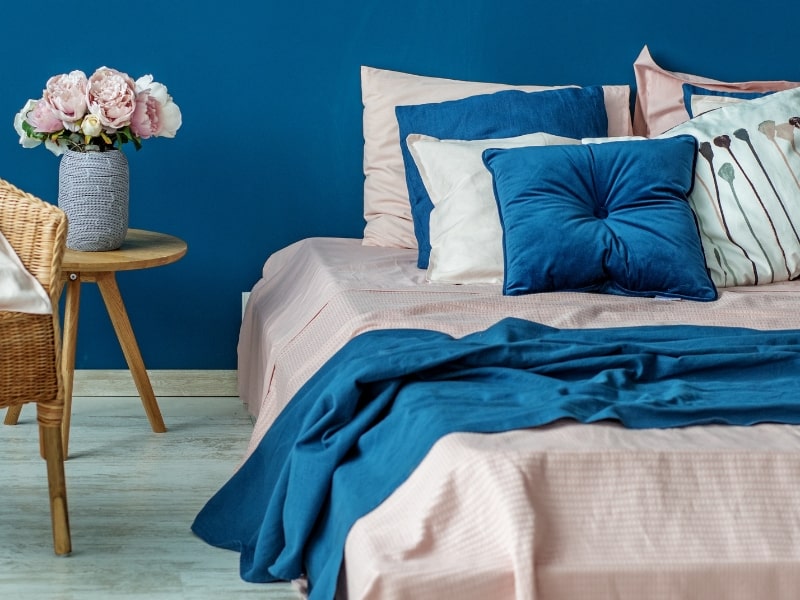
According to the aforementioned Spoonflower study, which collected data from nearly 200,000 purchases over a two-year period, blue, black, and gray are the most popular colors for home decor purchases in the United States.
The study also revealed strong regional differences in color preferences, with California and its neighboring states buying black decor most, the South preferring gray, and the remaining 41 states favoring blue.
Additionally, of 74 US cities, blue ranks top in more than half, including New York, Washington DC, Miami, Houston, Dallas, and San Francisco.
However, it’s worth noting that color preferences can vary greatly depending on culture, life experiences, and socialization.
Cars
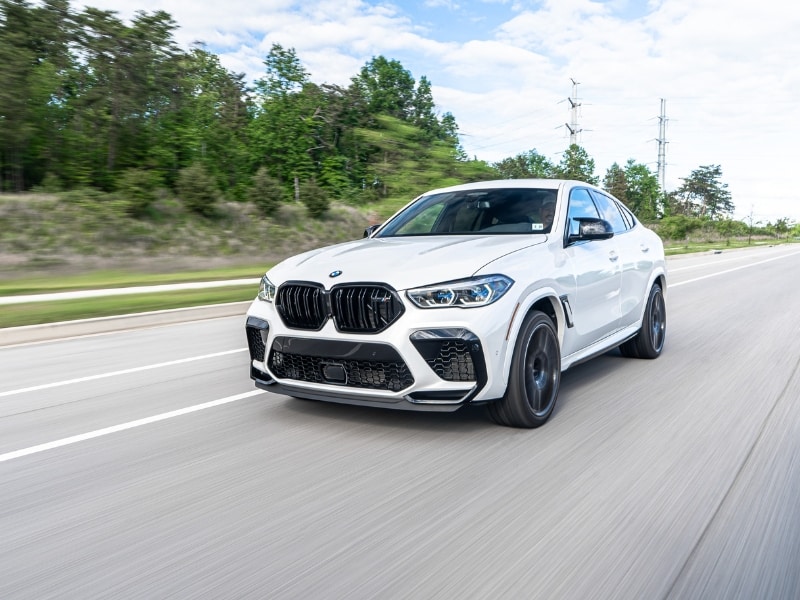
An iSeeCars.com study shows that the most popular car colors in the US are:
- White: 25.8%
- Black: 22.3%
- Gray: 18.4%
- Silver: 12.1%
- Blue: 9.5%
- Red: 8.6%
Grayscale colors (white, black, gray, and silver) represent 78.6% of all vehicles on the road in the United States.
In contrast to the same brand’s 2017 study, white replaced black.
Axalta’s Automotive Popularity Report highlights that gray is Europe’s most popular car color.
However, in Europe, black and silver colors are particularly popular.
Phones
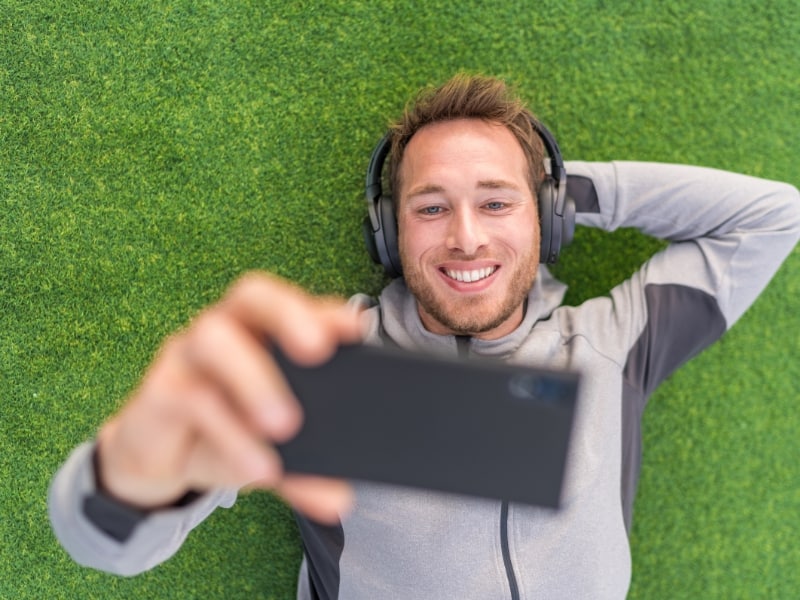
According to a survey, black is the most common color for phones, followed by white. It’s no wonder since black symbolizes elegance and sophistication. It is the color of formality associated with authority and power.
However, colors such as gold and rose gold or even gold have become increasingly trendy in recent years.
Did you enjoy this article about the world’s most popular color? Share it with your friends and see if the statistics match your preferences.

